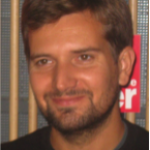Link to Pubmed [PMID] – 32522805
Link to DOI – 10.1126/scitranslmed.aaz3267
Sci Transl Med 2020 Jun; 12(547):
Heterozygous mutations of the gene encoding the postsynaptic protein SHANK3 are associated with syndromic forms of autism spectrum disorders (ASDs). One of the earliest clinical symptoms in SHANK3-associated ASD is neonatal skeletal muscle hypotonia. This symptom can be critical for the early diagnosis of affected children; however, the mechanism mediating hypotonia in ASD is not completely understood. Here, we used a combination of patient-derived human induced pluripotent stem cells (hiPSCs), Shank3Δ11(-/-) mice, and Phelan-McDermid syndrome (PMDS) muscle biopsies from patients of different ages to analyze the role of SHANK3 on motor unit development. Our results suggest that the hypotonia in SHANK3 deficiency might be caused by dysfunctions in all elements of the voluntary motor system: motoneurons, neuromuscular junctions (NMJs), and striated muscles. We found that SHANK3 localizes in Z-discs in the skeletal muscle sarcomere and co-immunoprecipitates with α-ACTININ. SHANK3 deficiency lead to shortened Z-discs and severe impairment of acetylcholine receptor clustering in hiPSC-derived myotubes and in muscle from Shank3Δ11(-/-) mice and patients with PMDS, indicating a crucial role for SHANK3 in the maturation of NMJs and striated muscle. Functional motor defects in Shank3Δ11(-/-) mice could be rescued with the troponin activator Tirasemtiv that sensitizes muscle fibers to calcium. Our observations give insight into the function of SHANK3 besides the central nervous system and imply potential treatment strategies for SHANK3-associated ASD.


